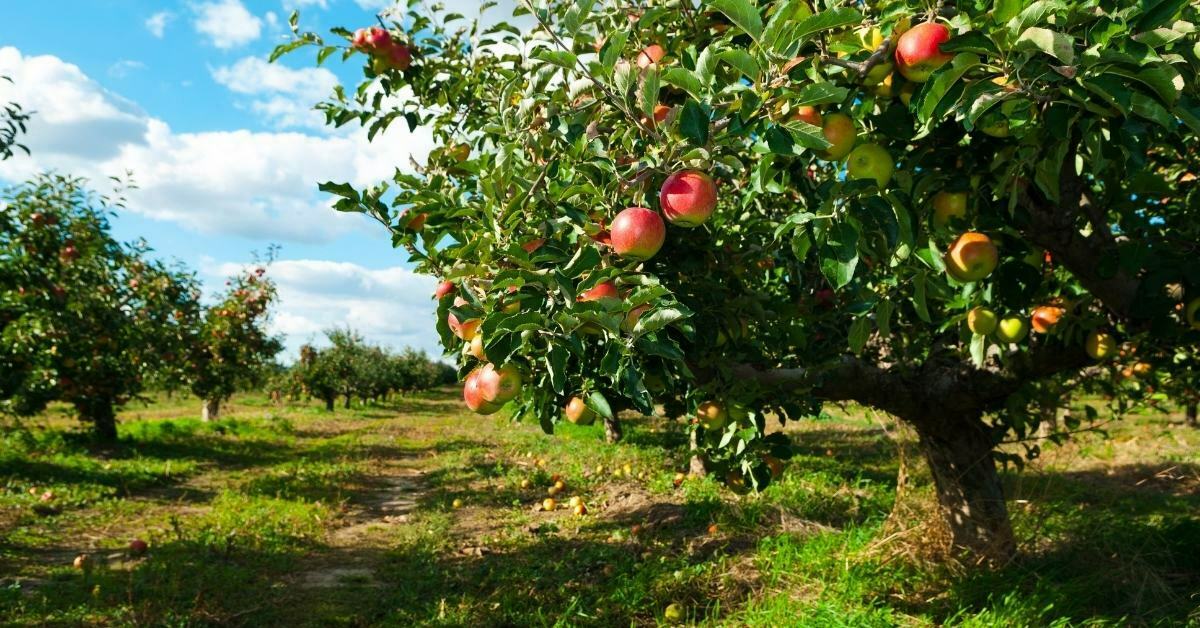September is the month that marks the end of summer and the beginning of autumn. Many of your early crops like French and runner beans, courgettes, and chilies will now be coming to an end if they haven’t already but at the same time, your later crops such as leeks and maincrop potatoes will be coming up in their plenty.
Gardening Jobs To Do In September
The top gardening things to do in September are to harvest the large numbers of fruits, vegetables, and salads that will be ready. Sow the relatively small amount of plants that are available this month and plant on previously sown fruit and vegetables.
Clear away any dead leaves, plants, or branches as soon as the crops have finished. Please make your compost heap and add everything you can to it to make good, plant growing soil, and check all fruit trees such as apples and pears for diseases like brown rot. Be sure to discard all infected fruit so as to stop the disease from spreading.
There are a huge number of vegetables ready, whether they are leftover from last year or just coming into season.
The vast amount includes;
- aubergines,
- Swiss chard,
- onions,
- sweetcorn,
- French beans,
- swedes,
- globe artichokes,
- cabbages,
- carrots,
- calabrese,
- chilies,
- peppers,
- beetroot, 4
- leeks,
- winter squashes,
- peas,
- winter radishes,
- oriental leaves,
- potatoes,
- runner beans,
- cauliflower,
- Florence fennel,
- kohlrabi,
- Brussel sprouts,
- summer squashes,
- spinach,
- marrows,
- sweet potatoes,
- turnips
- and finally celeriac.
If you have thinned out plants such as carrots, cabbages, and turnips, then you should have some healthy and nutritious vegetables to eat. Remember, if you want to store vegetables, you should dry them out by laying them in a sunny place.
Harvesting
You will also have a number of salad crops to harvest, such as chicory, celery, tomatoes, land cress, lettuces, cucumbers, radishes, salad leaves, endive, and spring onions. When harvesting salad leaves or chicory, you can either pick one leaf at a time or uproot the entire plant if you know that you are going to use it all at once.
You should harvest cucumbers before they become too large because otherwise, they will go hard and may start to become moldy.
September is the time when fruit really starts to flourish. Many fruit trees and bushes will be laden with fruit just ready for you to harvest nearly every day. The large numbers of fruits ready are apples, pears, strawberries, grapes, melons, blackberries, cranberries, blueberries, figs, plums, damsons, gages, peaches, nectarines, raspberries, apricots, and cape gooseberries.
If you have been spraying your fruits regularly with pesticides and fungicides, then you should have a fine batch of healthy, tasty fruits ready to eat.
Sowing and planting

There is not much more than you can plant during September that will be ready for harvesting this year. This month is all about planting overwintering crops that will stay in the ground for the duration of winter and then sprout up at about lat spring, early summertime.
The very few vegetables that you can sow this month are a few types of oriental leaves and spinach. The only oriental leaves that you will be able to sow are mizuna, mizuna, and komatsuna. If the temperature has begun to drop at night, then you might want to sow them under cloches in order to give them the best chances of surviving.
These vegetables should be ready for picking before winter arrives. There are a number of salads that you can sow this month, and these include lettuces, radishes, rocket, salad leaves, land cress, corn salad, spring onions, and winter purslane.
These crops may need to be sown under cloches if you think it is necessary, as if a frost occurs, it will wipe them all out. The spring onions that you sow will probably overwinter, ready for harvesting next spring.
There are very few fruit and vegetables that you can plant this month. You might be able to get in a few spring cabbages, some types of onions, cranberries, peaches, nectarines, and strawberries. Cabbages should be transferred from pots or temporary seedbeds into soil that has been firmed down.
Cranberry bushes can be planted at any time between September and November. You can, however, also wait till next spring. You will require special ericaceous soil as the cranberries need an acidic plot of land to grow in. You should plant on new strawberry plants or runners that you got from previous batches.
You will get a more significant crop next year if you plant them as soon as possible in order to let them get established.
If you haven’t got one already, you should think about making your own compost bin. These can be used to harbor older plants, soil, and garden clippings. Once the stuff has rotted down, you can turn the once waste materials into nutritious and beneficial garden compost that will significantly help your plants flourish. Y
ou can make a compost bin out of cardboard and chicken wire or wooden planks. First of all, you should hammer four wooden posts into the ground and then wrap chicken wire around to form a square with one side open to allow for access.
Next, position the cardboard around the edge of the pen so that it looks like a hut with one wall missing. You may then want to use a carpet or sheet to cover it in order to stimulate decomposition. When using wooden planks, you simply construct a square-shaped pen with screws or nails.
Gardening jobs to do in September doesn’t end here. You might want to watch this valuable video for more September gardening tips and tricks:



